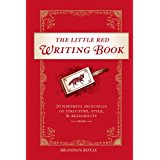Use Allusions, But Don’t Blog Squirrels in a Tire
 “Why can’t we innovate as quickly as our competition?’ asks the pointy-haired boss in the comic strip “Dilbert®”. “Maybe it’s because our management is like a family of squirrels that lives inside an old tire,” suggests Dilbert. Asked to be more specific, Dilbert says “It’s a Goodyear tire with five grey squirrels.”
“Why can’t we innovate as quickly as our competition?’ asks the pointy-haired boss in the comic strip “Dilbert®”. “Maybe it’s because our management is like a family of squirrels that lives inside an old tire,” suggests Dilbert. Asked to be more specific, Dilbert says “It’s a Goodyear tire with five grey squirrels.”
Talk about a failed allusion! What do I mean? An allusion is a figure of speech that blog content writers can use with several results in mind:
- getting readers to think about your subject in a new way
- cementing a bond between the writer and the readers based on shared experience and knowledge
- getting a point across without going into a lengthy explanation
Dilbert obviously failed on all three of those counts, because the connection of the metaphor (squirrels in a tire) and the issue of innovation to stay ahead of the competition was not made clear and then not explained.
When you want to liven up your blog content using allusions, be reasonably certain that the reference is obvious and that your target readers are likely to be familiar with the concept you’re trying to convey. Among other things, that means we, as content writers, need to gauge our readers’ level of education. If we mis-calculate their ability to recognize the allusion, the danger is that readers will find our content frustrating rather than illuminating.
Widely known allusions include:
- Achilles’ heel _ weakness a person or a company may have (the Greek god Achilles was invulnerable except for his heel). A blog on nutrition might refer to chocolate being one’s Achilles’ heel.
- Stonewalling – hindering or obstructing with delaying tactics (the reference is to Civil War military leader Stonewall Jackson, noted for being strong and stubborn in the face of the enemy). A blog on teamwork might refer to how non-productive it is when a team member “stonewalls”, rather than confronting the problem and communicating.
- Scrooge – a stingy character who hates to spend money (refers to a character from Charles Dickens’ A Christmas Carol). A blog on financial planning might suggest that rather than acting like a Scrooge, you can plan your charitable giving as part of your monthly budget.
As a blogger, you’re not right there with the ability to make eye contact and judge your audience’s reactions, and you can’t know for sure whether your allusion has puzzled them or hit the mark. It might be best to do just enough explaining to make the point clear. Dilbert left the pointy-haired boss wondering why on God’s earth innovation is like squirrels in a Goodyear tire.
Don’t leave your readers wondering just what it was you were trying to convey!





Follow us online!